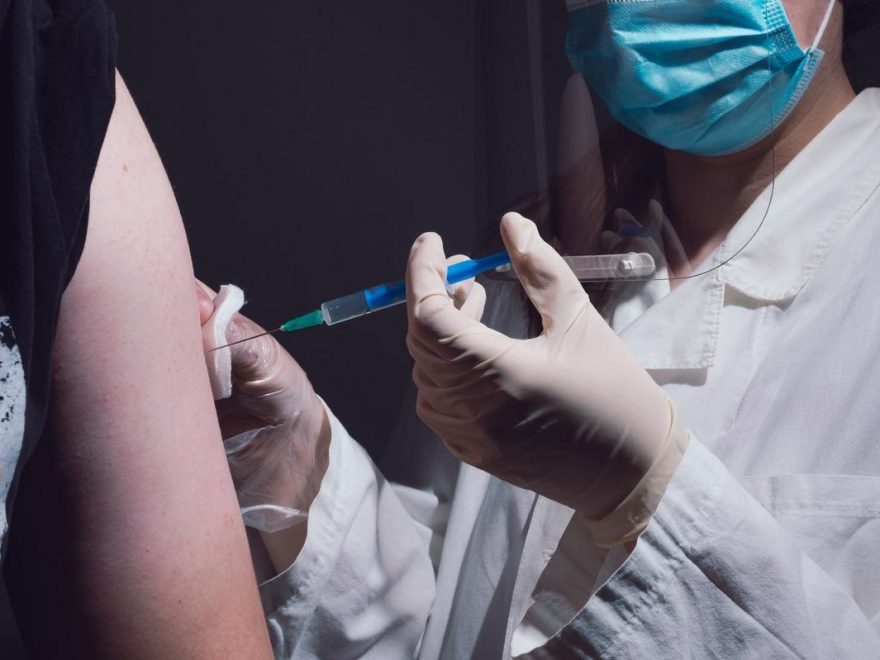In a recent study published in the medRxiv* preprint server, a team of researchers determined the impact of the emerging severe acute respiratory syndrome coronavirus 2 (SARS-CoV-2) variants of concern (VOCs) and vaccination status on the SARS-CoV-2 transmission dynamics. The study concluded that the coronavirus disease 2019 (COVID-19) vaccination lowered the susceptibility to infection and the infected patients' transmission rates.
 Study: Household secondary attack rates of SARS-CoV-2 by variant and vaccination status: an updated systematic review and meta-analysis. Image Credit: Haris Mm/Shutterstock
Study: Household secondary attack rates of SARS-CoV-2 by variant and vaccination status: an updated systematic review and meta-analysis. Image Credit: Haris Mm/Shutterstock
Background
The researchers of the current study had published a previous systematic review and meta-analysis in June 2021 which reported an 18.9% household secondary attack rate (SAR) of SARS-CoV-2.
Emerging SARS-CoV-2 VOCs such as the Alpha, Beta, Delta, Omicron, and Gamma variants and improved vaccination rates influenced SARS-CoV-2 transmission rates. The Delta variant has become the predominant SARS-CoV-2 variant in most countries, and the Omicron variant is more infectious than Delta due to its heavily mutated spike (S) protein region.
Several randomized controlled trials and large-scale observational studies have demonstrated the SARS-CoV-2 vaccine effectiveness (VE) against COVID-19-associated symptomatic diseases and deaths. Although household VE studies supplement the results of VE trials, VE in reducing the SARS-CoV-2 susceptibility and infectiousness within the household given prolonged close contact between index cases and household members in the context of emerging SARS-CoV-2 VOCs remains uncertain.
The study
In the present systematic review and meta-analysis, researchers searched PubMed from June 18, 2021, through January 7, 2022, to assess the effect of SARS-CoV-2 VOCs and index case or contact vaccination status on household SARs using 1,291 household contact tracing studies. The research followed the Preferred Reporting Items for Systematic Reviews and Meta-analyses (PRISMA) guidelines.
In the meta-analyses, SAR estimates in households and 95% confidence interval (CI) were obtained using generalized linear mixed models, disaggregated by several covariates including variant, vaccine type, and vaccination status of the index case and household contact.
VE based on transmission probability for infectiousness (VEI,P), susceptibility (VES,P), and total vaccine effectiveness (VET,P) were estimated by SARs.
Results
The results indicated that fully vaccinated index cases showed lower transmission to household contacts than unvaccinated index cases, whereas partially vaccinated index cases' transmission rates were not significantly different from unvaccinated index cases.
A total of 27 studies with midpoints in 2021 had a household SAR of 35.8%. The Alpha, Beta, and Delta variants had a household SAR of 38%, 22.5%, and 30.8%, respectively. SAR for Alpha/Delta was not significantly different from Alpha/Delta. In contrast, SARs for Alpha was substantially higher than Beta, and SARs for Delta and Alpha were higher than the original wild-type variant.
The (VEI,P), (VES,P), and (VET,P) for fully vaccinated index cases were 56.6%, 70.3%, and 86.8% respectively, and for partially vaccinated index cases were 27.5%, 32 43.9%, and 59.9%, respectively.
The overall estimated mean SAR for unvaccinated, partially vaccinated, and fully vaccinated index cases to household contacts were 26.6%, 16.2%, and 14.4%, respectively. The overall estimated mean household SAR for unvaccinated, partially vaccinated, and fully vaccinated household contacts were 33.8%, 23.7%, and 14.1%, respectively, regardless of index case vaccination status.
Mean estimated SARs from two studies with fully BNT162b2 vaccinated and unvaccinated index cases were 8.3% and 35.9%, respectively, regardless of household contacts vaccination status.
No significant differences were reported in SARs for household contacts fully vaccinated with Ad26.COV2.S, BNT162b2, mRNA-1273, and ChAdOx1-S vaccines or partially vaccinated with ChAdOx1-S, BNT162b2, and mRNA-1273 vaccines.
Conclusions
The study concluded that fully vaccinated COVID-19 index cases had lower household SAR of SARS-CoV-2 than unvaccinated index cases. Compared to unvaccinated household contacts, fully and partially vaccinated household contacts had lower susceptibility to SARS-CoV-2 infection.
The household contacts exposed to SARS-CoV-2 Delta and Alpha variants had a substantially higher risk of infection than the original wild-type variant. Household SARs for the present study (35.8%) was higher than the previous study (15.7%) conducted by the researchers, indicating that the household remained a major venue for COVID-19 transmission. Public health measures including increased testing, social distancing, isolation, improved ventilation, and hand hygiene may help prevent the COVID-19 transmission.
The present study's (VEI,P) estimates were within the range of a household data-based modeling study from Israel conducted before the widespread of the Delta variant. The study results warrant caution as variants more virulent and transmissible than the Omicron variant can also emerge in the future.
Overall, the study emphasizes the vaccination-associated reduction in SARS-CoV-2 infection and household transmission rates.
*Important notice
medRxiv publishes preliminary scientific reports that are not peer-reviewed and, therefore, should not be regarded as conclusive, guide clinical practice/health-related behavior, or treated as established information.
- Household secondary attack rates of SARS-CoV-2 by variant and vaccination status: an updated systematic review and meta-analysis, Zachary J. Madewell, Yang Yang, Ira M. Longini Jr., M. Elizabeth Halloran, Natalie E. Dean. medRxiv. doi: https://doi.org/10.1101/2022.01.09.22268984 https://www.medrxiv.org/content/10.1101/2022.01.09.22268984v1
Posted in: Medical Science News | Medical Research News | Disease/Infection News
Tags: Coronavirus, Coronavirus Disease COVID-19, covid-19, Hygiene, Omicron, Protein, Public Health, Research, Respiratory, SARS, SARS-CoV-2, Severe Acute Respiratory, Severe Acute Respiratory Syndrome, Syndrome, Vaccine

Written by
Shanet Susan Alex
Shanet Susan Alex, a medical writer, based in Kerala, India, is a Doctor of Pharmacy graduate from Kerala University of Health Sciences. Her academic background is in clinical pharmacy and research, and she is passionate about medical writing. Shanet has published papers in the International Journal of Medical Science and Current Research (IJMSCR), the International Journal of Pharmacy (IJP), and the International Journal of Medical Science and Applied Research (IJMSAR). Apart from work, she enjoys listening to music and watching movies.
Source: Read Full Article
